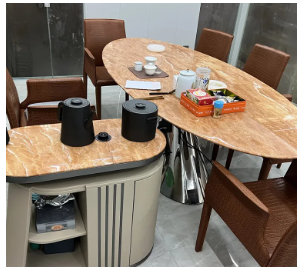The marble slabs in building construction
2025-05-07
Marble slabs are often used in building construction due to their aesthetic appeal, durability, and versatility. They can be employed in various architectural applications, including flooring, wall cladding, countertops, and decorative elements. Here are some key points about marble slabs in construction:
1. Types of Marble Slabs:
Natural Marble: Extracted from quarries, natural marble comes in various colors, textures, and patterns, making it ideal for unique designs.
Engineered Marble: This is a composite material made from crushed marble mixed with resin and pigments. It's more affordable than natural marble but can still provide a similar look.
2. Applications of Marble Slabs:
Flooring: Marble floors are highly prized for their elegant look and durability. It’s often used in luxury homes, hotels, and commercial spaces.
Countertops: In kitchens and bathrooms, marble countertops are known for their smooth surface and high-end appearance. However, they can be prone to staining and scratching, requiring proper maintenance.
Wall Cladding: Marble slabs are commonly used for interior wall cladding, particularly in lobbies, bathrooms, and feature walls, providing a sophisticated and timeless look.
Staircases and Steps: Marble is often used in stairs for both residential and commercial buildings due to its beauty and ability to withstand foot traffic.
Architectural Elements: Marble is used in columns, balustrades, and sculptures due to its ability to be sculpted and its appealing finish.

3. Advantages:
Aesthetic Appeal: Marble’s rich veining and wide range of colors make it a visually stunning material.
Durability: Marble is known for its strength, resistance to wear, and long-lasting nature when properly maintained.
Luxury Look: Marble adds a touch of luxury to any space, making it a sought-after material for high-end projects.
Heat Resistance: Marble is naturally heat-resistant, making it an ideal choice for kitchens and fireplaces.
4. Disadvantages:
Porosity: Marble is a porous stone, meaning it can stain easily if not sealed properly, especially when exposed to acidic substances.
Cost: Marble slabs can be expensive, particularly high-quality natural marble.
Maintenance: It requires regular sealing to prevent staining, and it can be prone to scratches and etching.
5. Installation:
Cutting and Shaping: Marble slabs are cut and shaped using specialized equipment like wet saws and CNC machines to ensure precision and to maintain the integrity of the stone.
Support and Reinforcement: Due to the heavy weight of marble slabs, proper support is needed during installation, especially for countertops and large surface areas.
If you are interested in our products or have any questions, please feel free to contact us and we will reply you within 24 hours.